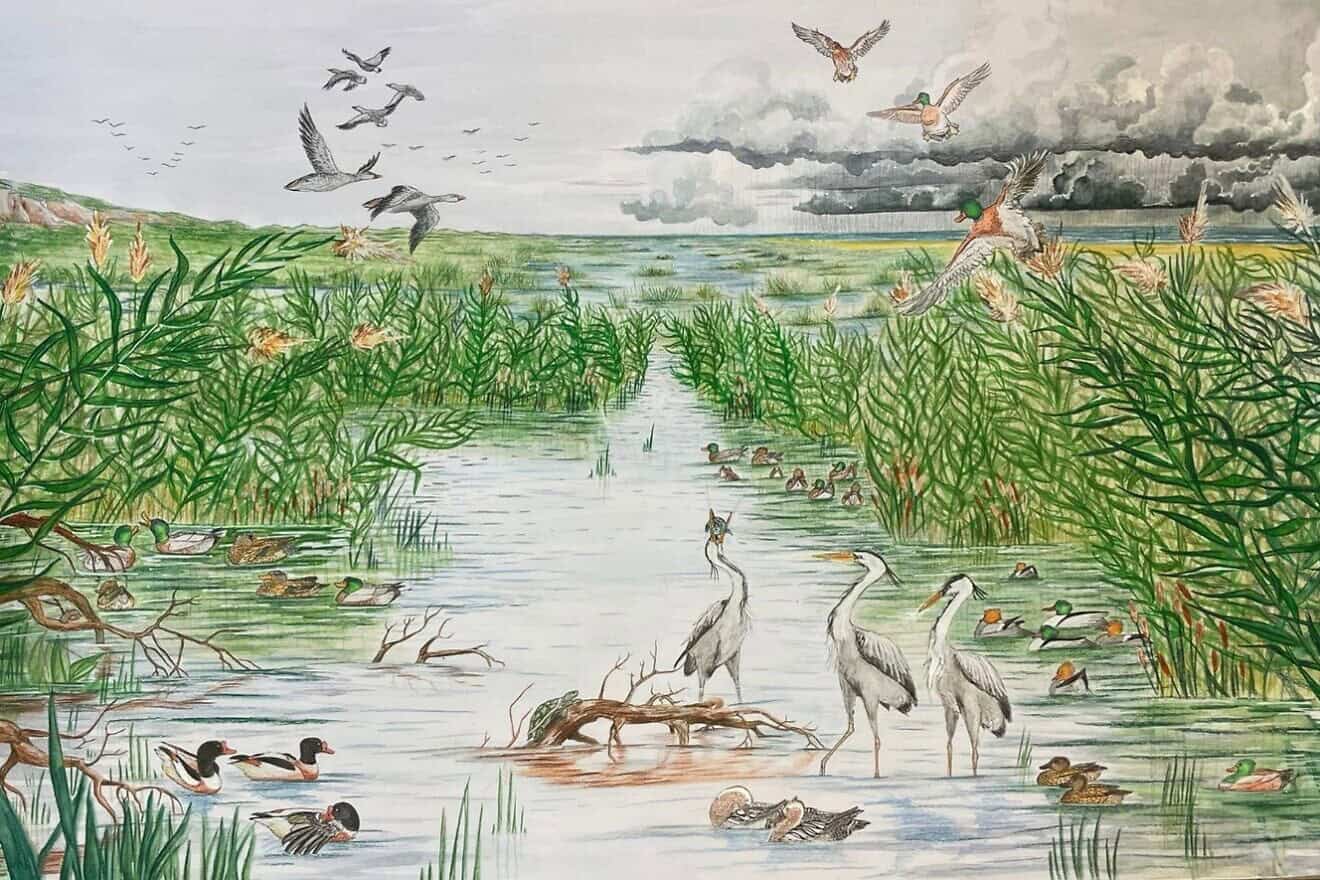Fifteen thousand years ago, the slopes of Mount Carmel looked nothing like the landscape we know today. Instead of orchards and farmland stretching to the Mediterranean, the coastal plain below was a broad, water-rich expanse of lakes and marshes. A new study published in the International Journal of Osteoarchaeology reveals that the people living in the el-Wad Cave on Mount Carmel relied heavily on those wetlands. The bones they left behind—ducks, geese, cranes, and dozens of other species—show a world in which migratory birds shaped daily life at the end of the Ice Age.
The research team, led by Dr. Linda Amos of the University of Haifa and Christian-Albrechts-Universität in Kiel, Germany, analyzed hundreds of avian remains from the Natufian layers of the site. These were the bones of animals that had been hunted, butchered, cooked, eaten, and sometimes turned into beads and pendants. “Every winter, they ate ducks,” Amos told The Times of Israel. “I can imagine them on a foggy morning, getting up, going out, and hunting ducks, as they had heard they had arrived.”
Professor Reuven Yeshurun of the University of Haifa explained that this was a very different world. “The Carmel hunters lived at a time when sea levels were far lower, and the coastline was a broad plain dotted with lakes and marshes,” he said. “Migrating waterfowl provided not only food but also raw materials for beads and ornaments.” The findings mark the first clear evidence that the Natufians of el-Wad made seasonal expeditions to the coastal plain to harvest birds from freshwater wetlands that no longer exist.
This new picture of ancient Mount Carmel raises an important question: what does it mean when the land itself reveals forgotten abundance?
The Bible preserves an early memory of the land’s richness, a quality not dependent on human settlement but inherent in the land itself. “For the Lord your God is bringing you into a good land, eretz tovah, a land with streams and springs and fountains issuing from plain and hill” (Deuteronomy 8:7). The Sages taught that the character of the land is expressed in its capacity to sustain life, whether through fields, forests, or—long before farming—wetlands that attracted migratory birds in staggering diversity. The Carmel wetlands described by the bird bones echo this description of a land defined by water sources emerging from the hills toward the plains.
The Natufians were among the first communities to settle permanently in the region, living at el-Wad between 15,000 and 11,700 years ago. Excavations at the site have uncovered stone dwellings, burials, and tools that mark the slow shift from nomadic hunting bands to fixed villages. Previous research focused on gazelles as their primary food source, but the new analysis shows that the Natufians expanded their diet seasonally, walking at least five kilometers from their homes on Mount Carmel to reach the wetland plain below.
Amos and her colleagues identified 43 species of birds, including ducks, geese, waders, gulls, rails, cranes, quail, and partridges. Many bones bore butchery marks or signs of burning, and some held small flint fragments from tool strikes. Others had been carved into beads and pendants. Earlier excavations at el-Wad revealed elaborate headdresses made from partridge bones, usually found in burials. But the new study shows that bead-making took place inside the dwellings themselves, using bones from a wide range of species. There was no strict divide between birds used for cultural expression and birds eaten for food.
The diversity of waterfowl in the early layers of the site also provides the first direct evidence that significant freshwater lakes once stretched across the Carmel plain. Previous studies of animals and vegetation had not revealed such wetlands, but the bird bones could not have accumulated without them. As Amos put it, “We didn’t even know this habitat existed until the birds told us through their bones.”
Over time, the picture shifted. In the later Natufian layers, the variety of waterbirds declined, replaced by a narrower range dominated by mallards. The researchers believe this reflects rising sea levels that narrowed the coastal plain and reduced freshwater habitats at the end of the Ice Age. The wetlands disappeared. The birds changed their routes. The people adapted.
The land remembers even when its surface transforms. These findings show that the Carmel of 15,000 years ago held lakes now vanished, birds whose migrations no longer stop there, and communities that learned the land by walking it seasonally from hilltop to plain. The bones uncovered at el-Wad give voice to that landscape. They confirm, once again, that the land of Israel has always carried layers of life that reveal its deep, enduring character.




